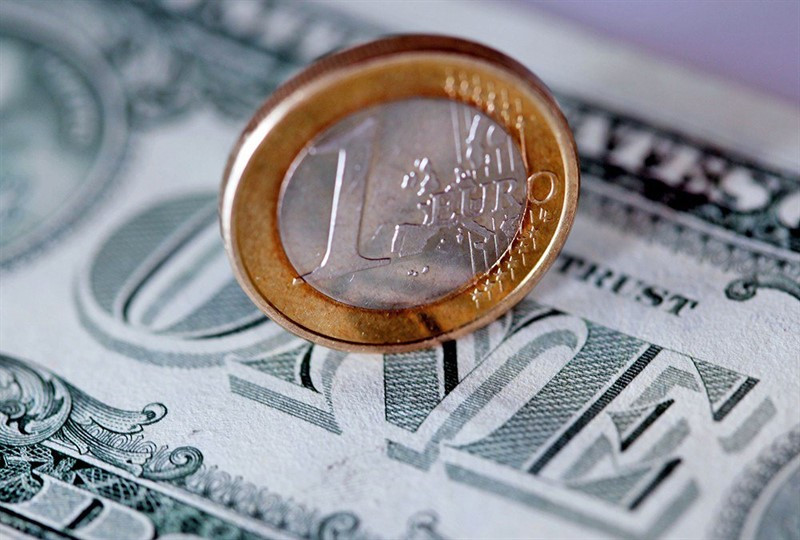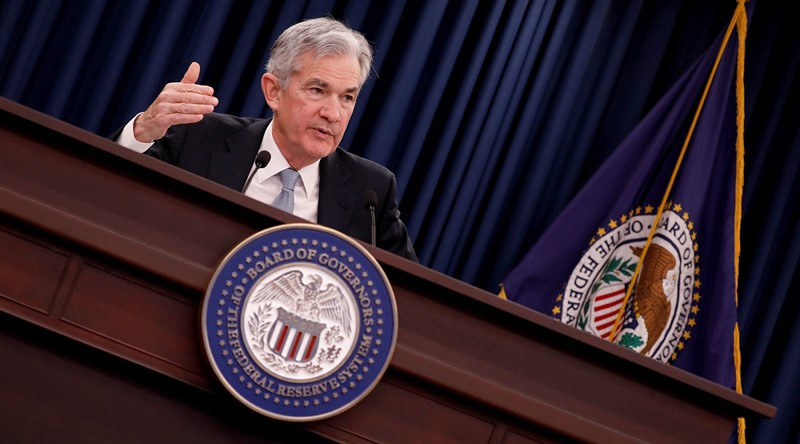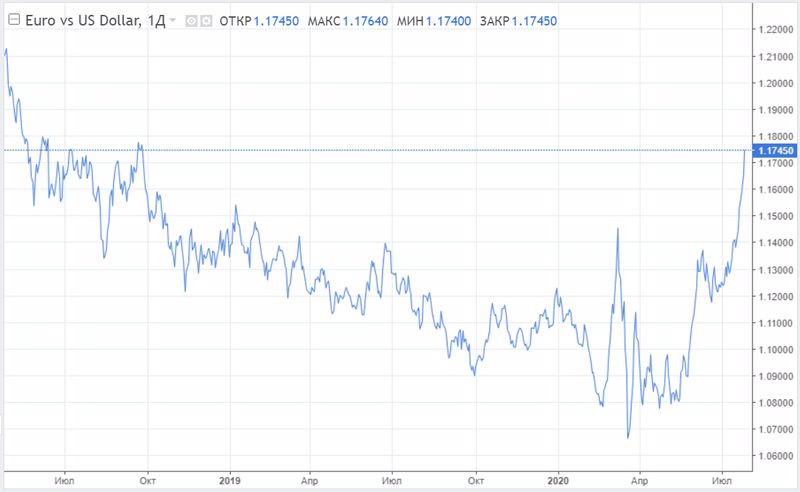
The EUR / USD pair has reached 22-month highs against the backdrop of a broad US dollar weakness.
The main factor of pressure on the greenback is the deterioration of diplomatic relations between Washington and Beijing.
US Secretary of State Mike Pompeo called China's political regime tyrannical and called for the creation of a new democratic alliance against China.
In theory, such a development of events could support the greenback as a traditional defensive asset, but not this time. Apparently, investors are worried that the US government may not be able to control the spread of COVID-19 in the country, which in turn casts doubt on the prospects for an early recovery of the national economy.
On Thursday, data on US GDP for the second quarter will be published.
For most of the second quarter, virtually all US states were in a tight quarantine regime, and experts predict a 35% slowdown in the country's economy. However, they admit that the data may be even worse. The Federal Reserve Bank of Atlanta, in particular, expects a reduction of 52.8%.
Another strong pressure on the USD is the Fed's monetary policy. In early spring, the regulator sharply lowered interest rates, thereby reducing the differential between rates in the US and in other countries. Also, the American Central Bank launched a large-scale asset repurchase program.
The next FOMC meeting will take place this week.

A few weeks ago, the Federal Reserve chair Jerome Powell said that the US economy remains in a state of extreme uncertainty. Since then, the country's economic outlook has deteriorated. The unemployment benefit supplement has already expired, and the packages of measures discussed by the US Congress may not impress market participants. Taking this into account, the Fed has no choice but to continue to adhere to the dovish position, pledging to pursue a stimulating monetary policy.
Last month, FOMC officials noted that US interest rates will remain near zero until at least 2022.
It is assumed that the dynamics of the dollar will depend on the tone of Powell's statements. In June, the Fed chair said that the US economy could recover in the second half of the year, however, due to the worsening epidemiological situation in the country, he could reconsider his views.
The USD index slipped to almost 2-year lows around 93.7 points. Any hint by Powell about negative interest rates will be a powerful blow to the greenback.
The EUR / USD crossed the 1.1700 mark, marking peak highs since September 2018.

It seems that Europe, which recently agreed on an economic recovery fund, has begun to look like a new safe haven in the eyes of investors.
The German IFO business optimism index rose to 90.5 points in July against 86.3 points recorded in June.
"The German economy is gradually recovering. Positive dynamics is observed in trade, industry, services, and construction, "- follows from the report of the Munich Institute for Economic Research.
Meanwhile, on Thursday, data on the GDP of Germany and the whole of the eurozone will be released, which will show the extent of the economic downturn caused by quarantine restrictions in the second quarter. German GDP is expected to contract by 9% and the eurozone economy by 11.2%.
Technical indicators signal that in overbought conditions, the EUR / USD pair may undergo downward correct in the short term.
Support is located at 1.1495 (March high). A break of this level will be contained in the 2-month upward trend area at 1.1383.
In general, the pair remains positive, and the upward movement seems to be the path of least resistance. At least as long as the EUR / USD is trading above the 200-day moving average, which is currently in the area of 1.1073, the rally could continue. Absorption of recent highs around 1.1730 will clear the way for the bulls to 1.1815 and 1.1850.





















